Update from the Field: 4R for Real
Posted by Dave Dyson, Agronomist on April 16, 2020

Excessive amounts of nutrients in watersheds have been causing problems in large bodies of water such as lakes and oceans. We see large concentrations of phosphorus in Lake Erie causing algae blooms and nitrates in the Gulf of Mexico causing a “dead zone” the size of New Jersey. There are four main sources for these pollutants: animal waste, human waste, industrial discharge, and commercial fertilizer. In the agriculture industry we may believe others are polluting at higher rates with no real regrets or worries about the waste they are shipping downstream, but we still need to be vigilant about nutrients leaving the root zone. The 4R Nutrient Stewardship program outlines best practices that will help keep nutrients in our fields. No one wants to lose nutrients; that’s like throwing money down the drain. The 4Rs represent applying fertilizer at the right rate, from the right source, at the right time and in the right place.
Utilizing the right fertilizer source can make a significant difference in where and how much fertilizer can be placed in the root zone. By applying a high quality product, such as a PureGrade® low-salt, high orthophosphate starter, fertilizer can be placed in close proximity to the seed. The advantage of placing fertilizer close to the seed is an increased efficiency of fertilizer. As fertilizer efficiency increases, the amount of fertilizer needed to see the benefit begins to decrease. There are three goals when using starter fertilizer:
- Faster emergence
- Quicker pollination
- Drier crops at harvest
High quality, low-salt starter fertilizers enable growers to reduce the rate of starter fertilizer to 3-5 gallons per acre, while still providing a great carrier for micronutrients, fulvic acids, biologicals, and insecticides.
The right rate can be accomplished through soil and tissue testing. Soil testing for nutrients on soil management zones less than 8 acres will provide an accurate picture of the nutrients available to the upcoming crop. Precision soil testing should be done once every three years to establish a baseline for nutrient recommendations. While in season, tissue samples can tell us where and what type of fertilizer to apply. As I always say, “Don’t guess, soil or tissue test!”
The right time is the next part of the 4Rs. Nitrogen can be one of the biggest and most valuable investments a grower faces during the growing season. Should nitrogen be applied pre-plant so the plant will never go without nitrogen, or should nitrogen be applied in-season while the plant is growing and can take up the product? When applying nitrogen, always include a product that will help keep it in the root zone. Doing this will protect both the environment and the investment. UltraMate® LQ can be easily added to any liquid UAN source. UltraMate LQ is 12% humic acid and 4% fulvic acid. Both humic and fulvic acid will complex the nitrogen molecule, protecting the nitrogen from the environment. This action increases the uptake efficiency of the plant.
The last “R” in the 4Rs stands for the right place. Nutrients should be placed where crops can use them. Variable Rate Technology (VRT) enables the application of fertilizer and lime where the crop needs it, not where the nutrient levels are already high. The Andersons offers pelletized lime (NutraLime® DG) and gypsum (NutraSoft® DG) that can easily be VRT spread where the crop needs magnesium, calcium, or sulfate.
The Andersons is proud and committed to being a 4R Stewardship Partner. Following the 4Rs can help prevent nutrients from leaving the field. This will protect the watersheds, as well as increase yields by applying nutrients in an available form to the crop. If you have any questions on products that can enhance the efficiency of nutrients, contact your representative from The Andersons.
FOR MORE INFORMATION:
Please complete the form, and we’ll get you in touch with your Territory Manager from The Andersons.

Dave Dyson is a regional agronomist for The Andersons’ Farm Centers which are located throughout Ohio, Michigan, and Indiana. He is an Indiana native and grew up on a dairy farm in Miami County. A graduate of Purdue University with a degree in Crop & Soil Science, Dave has a deep knowledge of various agronomic topics and is committed to helping growers improve their crops. If you have any questions, Dave can be reached at david_dyson@andersonsinc.com.
© 2020 The Andersons, Inc. All Rights Reserved. PureGrade, UltraMate, NutraLime, NutraSoft are registered trademarks of The Andersons, Inc.


